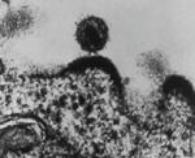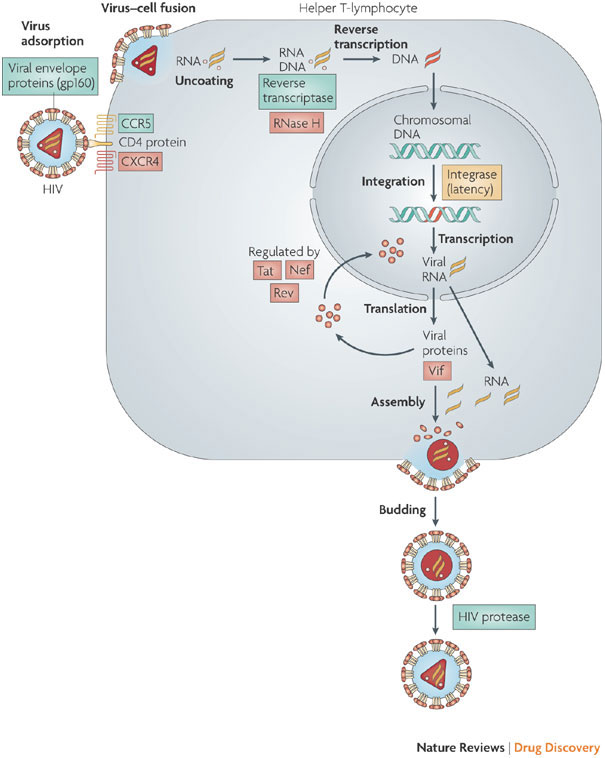
…lead a team that will walk the walk. For More Information on please call Gwendolyn Martin @ 310.358.2423 |
July 2009 Dear Friend, In our upcoming issue of Searchlight express, we'll explain how new anti-HIV drugs are created. From beginning to end, the drug development process is as exciting as it is challenging. Currently, AIDS Research Alliance advances research in almost every stage of the process, and we're sure this overview will help you appreciate the scope—and cost—of our research. If you aren't on the mailing list, click here to make sure you get a copy. Before we explain how drugs are developed, it'll be first helpful for us to explain to you how HIV infects a healthy cell and produces new copies of itself. In the article below, we'll show you the steps HIV uses, show you how current anti-HIV drugs are able to thwart HIV and how scientists decide what HIV targets to attack. With best wishes, Carolyn H. Carlburg, JD
Chief Executive Officer |
|
There's been a breakthrough in the quest for HIV reservoir eradication. In the upcoming issue of Nature Medicine, Canadian and US scientists prove for the first time where HIV hides when it's under attack from anti-retroviral drugs. As AIDS Research Alliance hypothesized when it first began researching reservoir busting strategies, HIV hides in a cell that can remain in your body for the rest of your life. It's a very important cell in the immune system. This is the kind of cells that are called memory T-cells. They are the cells that carry the memory of seeing an infectious disease. jWhen a person is vaccinated against a particular disease, these memory T-cells remember how to respond if that pathogen is somehow introduced into the body. They then launch a very specific attack. But, they are also the perfect hiding place for HIV. Assumptions were wrong A Different Approach The team of Canadian and U.S. researchers found that treating HIV/AIDS with a combination of antiviral drugs and chemotherapy seems to destroy both the circulating virus and immune cells in which the virus hides. Their results made them try a strategy similar to the one used against leukemia, which is targeted chemotherapy, associated with a targeted immune treatment. This approach may make it possible to destroy the cells containing a virus while giving the immune system time to regenerate with healthy cells.
|
Getting In Taking Over Once HIV’s RNA is inside the cell, it undergoes reverse transcription to convert into DNA, the form of genetic information that is recognized by the T-cell with the help of an enzyme called reverse transcriptase. Putting it Together Unless the HIV lifecycle is interrupted, viral infection spreads throughout the entire body. HIV can make 100 million virus particles each day in patients with fairly advanced HIV disease. When HIV kills enough of T-cells, the body’s immune system can no longer function effectively, and the body is incapable of combating various types of deadly infections and cancers. click picture to enlarge |



